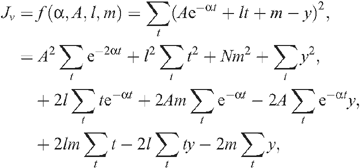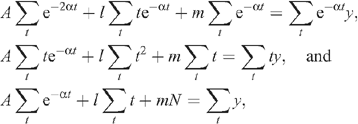Transient and permanent changes of xylem sap exudation by root systems of Zea mays after application of hydrostatic and osmotic forces
Michael Fritz A , Stephan Lorenzen A , Maria Popova B and Rudolf Ehwald A CA Humboldt-University Berlin, Institute of Biology, Invalidenstr. 42, 10115 Berlin.
B Timiriyasev-Institute of Plant Physiology, Russian Academy of Sciences, Botanicheskaya Ulica 35, 127 276 Moscow, Russian Federation.
C Corresponding author. Email: rudolf.ehwald@rz.hu-berlin.de
Functional Plant Biology 37(9) 813-827 https://doi.org/10.1071/FP10053
Submitted: 10 March 2010 Accepted: 3 June 2010 Published: 24 August 2010
Abstract
Effects of relatively small changes of hydrostatic and osmotic pressure on root exudation were studied with maize (Zea mays L.) plants grown in hydroculture to estimate the root reflection coefficient for the applied osmolyte (PEG 600). During the first seconds after a change in hydrostatic pressure, the exudation rate measured with a microflow sensor was instantaneously and strongly changed due to elastic deformation of the metaxylem vessels in the branched part of the main root axis. In osmotic experiments, a time of 10–20 s was required before the maximum change of the exudation rate was recorded. This retardation can be explained by diffusive saturation of the non-agitated root surface film and radial turgor propagation. A new standing osmotic gradient was reached within 4 min after a change of the water potential difference (osmotic, hydrostatic). The steady-state exudation rate J was altered by osmotic and hydrostatic forces with nearly equal efficiencies when branch roots were not injured. Hence, the reflection coefficient of the intact root for PEG 600 was close to unity. The results are in accord with nearly ideal reverse osmosis at high rates of water uptake by roots and confirm the absence of a significant hydraulic bypath circumventing the protoplasts.
Additional keywords: apoplast, aquaporin, branch root injury, endodermis, maize, microflow sensor, radial volume flow, root pressure probe, solvent drag.
Acknowledgement
This work was possible due to a PhD grant by the city of Berlin (NaFöG) given to Michael Fritz, which is gratefully acknowledged.
Anderson WP,
Aikman DP, Meiri A
(1970) Excised root exudation – a standing-gradient osmotic flow. Proceedings of the Royal Society of London. Series B. Biological Sciences 174, 445–458.
| Crossref | GoogleScholarGoogle Scholar |
and 2 to our data, the sum of the squared deviations between measured values and target functions was minimised:

where N is the number of points measured and m is used as symbol for J0.
As derivatives of the target function, we derive

which is solved using determinants. An analogous solution was applied for Eqn 2.


